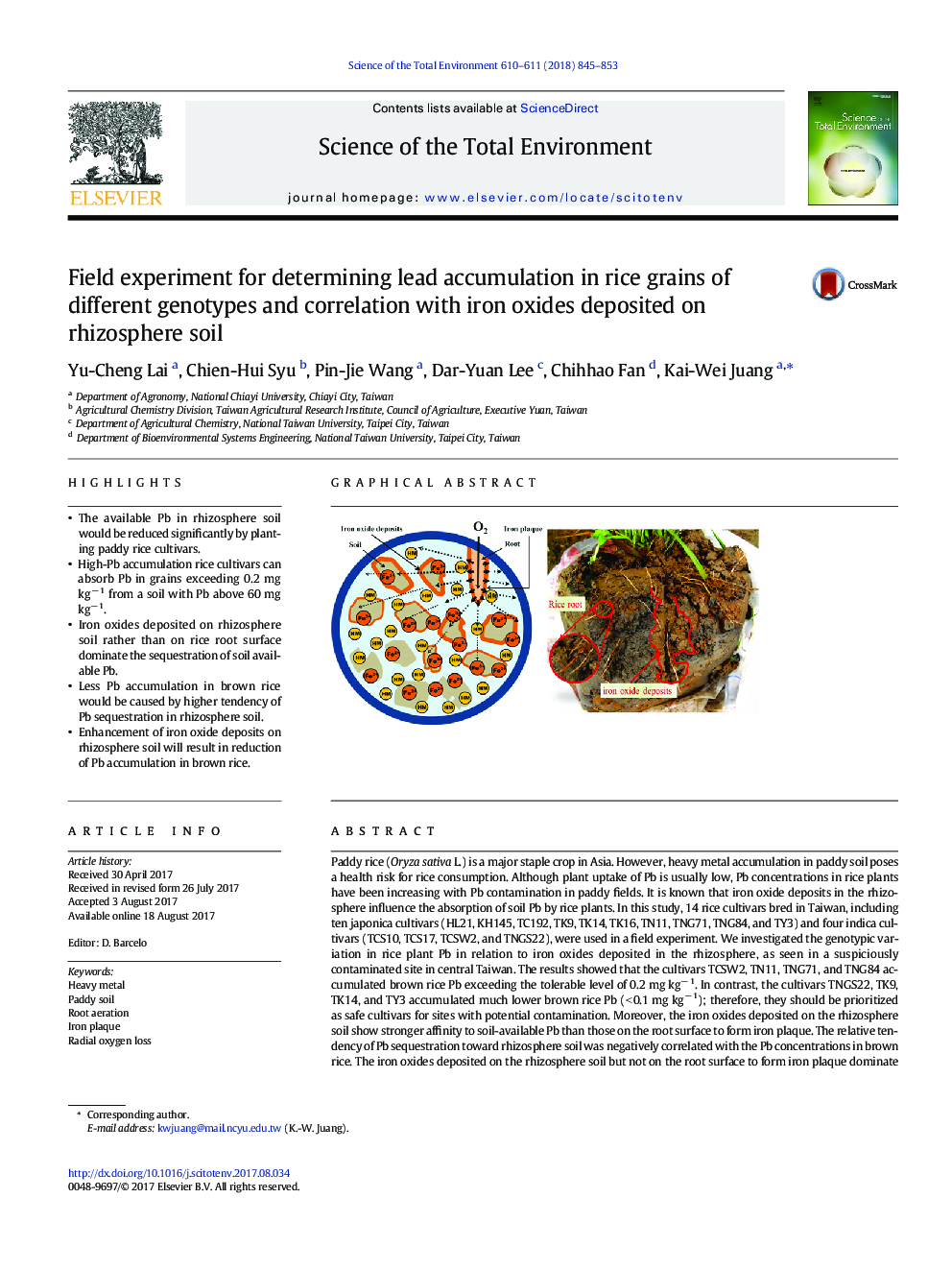| کد مقاله | کد نشریه | سال انتشار | مقاله انگلیسی | نسخه تمام متن |
|---|---|---|---|---|
| 5750251 | 1619692 | 2018 | 9 صفحه PDF | دانلود رایگان |
- The available Pb in rhizosphere soil would be reduced significantly by planting paddy rice cultivars.
- High-Pb accumulation rice cultivars can absorb Pb in grains exceeding 0.2 mg kgâ 1 from a soil with Pb above 60 mg kgâ 1.
- Iron oxides deposited on rhizosphere soil rather than on rice root surface dominate the sequestration of soil available Pb.
- Less Pb accumulation in brown rice would be caused by higher tendency of Pb sequestration in rhizosphere soil.
- Enhancement of iron oxide deposits on rhizosphere soil will result in reduction of Pb accumulation in brown rice.
Paddy rice (Oryza sativa L.) is a major staple crop in Asia. However, heavy metal accumulation in paddy soil poses a health risk for rice consumption. Although plant uptake of Pb is usually low, Pb concentrations in rice plants have been increasing with Pb contamination in paddy fields. It is known that iron oxide deposits in the rhizosphere influence the absorption of soil Pb by rice plants. In this study, 14 rice cultivars bred in Taiwan, including ten japonica cultivars (HL21, KH145, TC192, TK9, TK14, TK16, TN11, TNG71, TNG84, and TY3) and four indica cultivars (TCS10, TCS17, TCSW2, and TNGS22), were used in a field experiment. We investigated the genotypic variation in rice plant Pb in relation to iron oxides deposited in the rhizosphere, as seen in a suspiciously contaminated site in central Taiwan. The results showed that the cultivars TCSW2, TN11, TNG71, and TNG84 accumulated brown rice Pb exceeding the tolerable level of 0.2 mg kgâ 1. In contrast, the cultivars TNGS22, TK9, TK14, and TY3 accumulated much lower brown rice Pb (< 0.1 mg kgâ 1); therefore, they should be prioritized as safe cultivars for sites with potential contamination. Moreover, the iron oxides deposited on the rhizosphere soil show stronger affinity to soil-available Pb than those on the root surface to form iron plaque. The relative tendency of Pb sequestration toward rhizosphere soil was negatively correlated with the Pb concentrations in brown rice. The iron oxides deposited on the rhizosphere soil but not on the root surface to form iron plaque dominate Pb sequestration in the rhizosphere. Therefore, the enhancement of iron oxide deposits on the rhizosphere soil could serve as a barrier preventing soil Pb on the root surface and result in reduced Pb accumulation in brown rice.
450
Journal: Science of The Total Environment - Volumes 610â611, 1 January 2018, Pages 845-853
